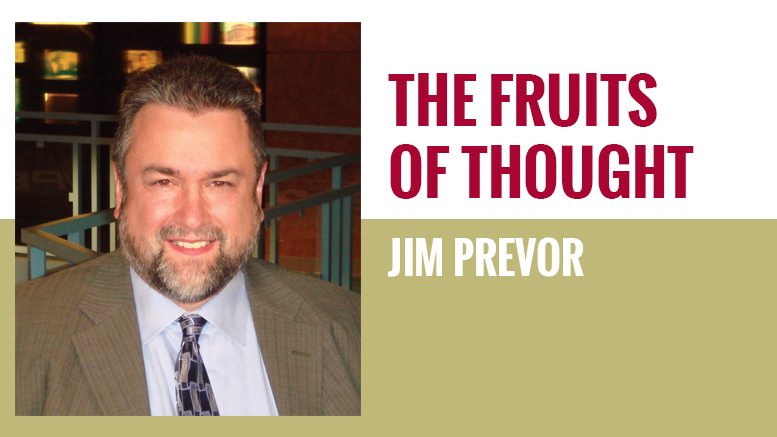What People Want Most
November 1, 2019 | 5 min to read
At this year's PMA Fresh Summit, industry leaders emphasized the need for caution in embracing claims lacking substantial evidence, highlighting a critical reliance on unverified survey data. Jim Prevor cautioned that surveys often misrepresent the actual decision-makers in the produce sector, risking misguided strategies. Furthermore, consumer values may not translate into purchasing behavior, as demonstrated by preferences for companies with aligned values often not reflected in sales, underscoring the necessity of aligning survey results with sales data for meaningful insights.

Originally printed in the November 2019 issue of Produce Business.
Each year, when we visit PMA’s Fresh Summit event we are asked the same question: WHAT IS THE BIG TAKE-AWAY?

Some years it is a packaging innovation; others, the growth of a new source of supply; sometimes the rise of a customer base or a shift in consumer needs; sometimes it is an industry priority such as food safety.
It is not always such an obvious or tangible thing. This year, we would say the take-away is the industry has to be extremely careful about buying into propositions that have very little evidence to support them.
The world is full of this kind of leaping to conclusions. In the midst of a terrible flood in Venice, the mayor declared it was due to climate change. Maybe, but there was a bigger flood in 1966. St. Mark’s Basilica is known to have flooded six times in the past 1,200 years. So, maybe the real issue is politicians in Italy not preparing for rare, but expected, flood events.
It is easier to place blame on things one does not control or have influence over than to take responsibility. After the 1966 flood, the Italian government drew up plans to prevent such floods. The project, called Mose, was so plagued by corruption and incompetence that they didn’t even start on it until 2003 – almost 40 years after the great flood. Now, it is projected to be finished in 2021 — though it seems that some of the already installed pieces are not being maintained and have started to rust.
Perhaps the biggest problem for the produce industry is relying on survey data that has not been crossed-checked with sales data.
In all cases, survey data has problems, most notably who is being surveyed. Are these actual decision-makers? Are they influencers? Are they not involved at all in purchase decisions? How do we make sure the people who are surveyed are representative of the population? Maybe people who are successful and busy doing important things simply don’t accept calls from people doing surveys… so the survey is a study of atypical people with a lot of free time on their hands.
Surveys may be designed to study a perfect representation of the population of the country, but not the relevant audience. For example, it can be very interesting to learn what everyone in the United States thinks, but if they are not the decision-makers on grocery shopping, the data may not tell us what we need to know.
Another issue is the meaning of the questions. We might survey consumers and ask if they served Idaho potatoes last week – but what does this mean to a consumer? Is any long baking potato perceived as an Idaho potato? Are round potatoes called Idaho potatoes if they are grown in Idaho? This is why extensive qualitative research is required before one can do quantitative research that provides meaningful data.
Perhaps the biggest problem for the produce industry is relying on survey data that has not been crossed-checked with sales data.
For produce and for many sustainability-related topics, the results of survey research require careful analysis. The problem is many of these topics carry a moral weight that make it difficult to get truthful answers. In other words, if we ask consumers if they are looking to increase use of paper clips and decrease use of staples or vice versa, you can probably get a truthful answer. If, however, you ask a mother of school age children if she intends to work on increasing her children’s consumption of fruits and vegetables while decreasing salty, fatty and sugary snacks, the question is virtually identical to asking the respondent “are you a good mother or not”?
So many marketing people in the industry are focused on the idea consumers want to deal with companies aligned with their values. Cathy Burns, chief executive of the Produce Marketing Association, included in her State of the Industry address a reference to research by Accenture explaining that “nearly two-thirds of global consumers prefer to buy goods and services from companies that stand for a shared purpose.”
We would think the number would be closer to 100% — after all, why wouldn’t people prefer to deal with companies aligned with their values? The more relevant question is to what degree are people motivated to do this? On the retail level, would consumers be willing to drive past one supermarket to get to one more aligned with their values? How far – a mile, two, ten?
What about price? Would consumers pay 5% more? Ten percent more? Or nothing more? And how much effort would consumers make to ensure their purchases align with their values?
When surveyed, the values consumers express often seem to line up with the values projected by chains, such as Whole Foods, or producers such as Tom’s of Maine, but sales at Whole Foods are a rounding error on Walmart’s results. Tom’s of Maine is a similarly small part of the market for personal care products. Of course, both organizations are now owned by corporate giants, Amazon.com and Colgate-Palmolive, respectively. So it is not even clear whose values are being analyzed.
There is some evidence that consumer-value preferences function mostly in the negative. So, paying your staff well is unlikely to get you business, but being caught cheating your staff might make you lose business.
It is not easy to find the answer, but if consumers say they want something, it is best to check against the sales statistics. It has been said that while democracy tells us what people want, capitalism tells us what people want most. Success in business depends on knowing the difference.
6 of 11 article in Produce Business November 2019

